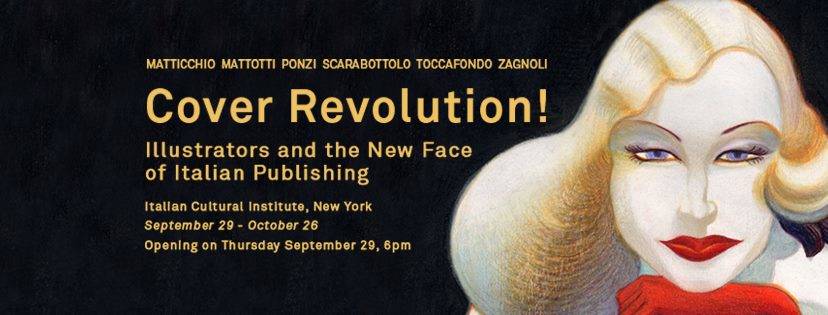Cover Revolutions! Illustrators and the New Face of Italian Publishing
A revolution is taking place on Italian bookstores shelves: more and more often illustrators are being asked to use their color palettes and distinctive marks to update publishers’ visual identities or redefne an author’s image. A handful of internationally acclaimed Italian illustrators, known for their original and powerful work, are to be thanked for this revolutionary change.
Perusing a bookstore has long been one of my favorite ways to spend time. Although I consider myself passionate about illustration and graphic design, until a few years ago when I entered a regular bookstore in Italy my attention was immediately drawn to the selection of titles made by the bookseller. Lately, however, as I weave in and out of the literature and non-fiction sections, I’ve noticed the way I look at books has changed and that my attention is ever more stimulated by the book-object iself. Italian publishers deserve credit for this change, which have, for a decade now, started opening up to renovation while safeguarding their visual identities and recognizable book series layouts.
Thanks also to the contributions of talented art directors and to the stimulation created by the birth of new, competitive publishers, book covers have begun to see more researched typography, redesigned logos, and the more and more frequent substitution of the once omnipresent photography with ad hoc illustrations. This change of pace has made a significant contribution work, talent and tenacity of a generation of illustrators who have been active since the end of 1970s, among whom are Franco Matticchio, Lorenzo Mattotti, and Guido Scarabottolo.
This exhibition and book aim to bare witness to this propitious moment in Italian illustration; the idea was born from observing this phenomenon and the need to give space to a group of internationally acclaimed Italian illustrators who are distinguished for their original style and for the validity of their publishing projects. We wanted to document experiences such as that of Scarabottolo, who for ten years was art director of Guanda, that of Gianluigi Toccafondo, who for many years helped shape Fandango’s aesthetics, and that of illustrators like Franco Matticchio, Lorenzo Mattotti, Emiliano Ponzi, and Olimpia Zagnoli, who skillfully bring new life to how authors’ works are perceived, characterizing them with their own color palettes and visual repertoires.
To complete this reconnaissance, we wanted to hear the voices of other prominent figures in this renovation by asking two art directors, Cristiano Guerri of Feltrinelli and Riccardo Falcinelli of Minimum fax, to tell us about their own relationship with illustration. Finally, we made use of the expertise of Stefano Salis, journalist with a specific interest in publishing and graphic design, to take us through the evolution of this phenomenon.





































i-Italy
Facebook
Google+
This work may not be reproduced, in whole or in part, without prior written permission.
Questo lavoro non può essere riprodotto, in tutto o in parte, senza permesso scritto.